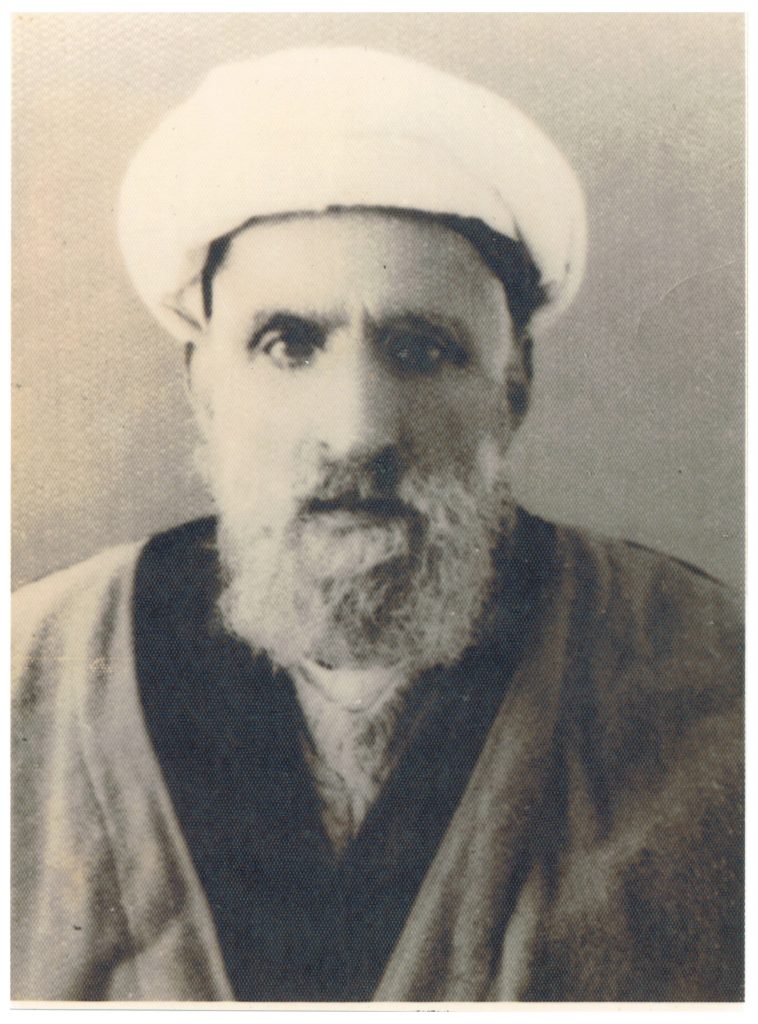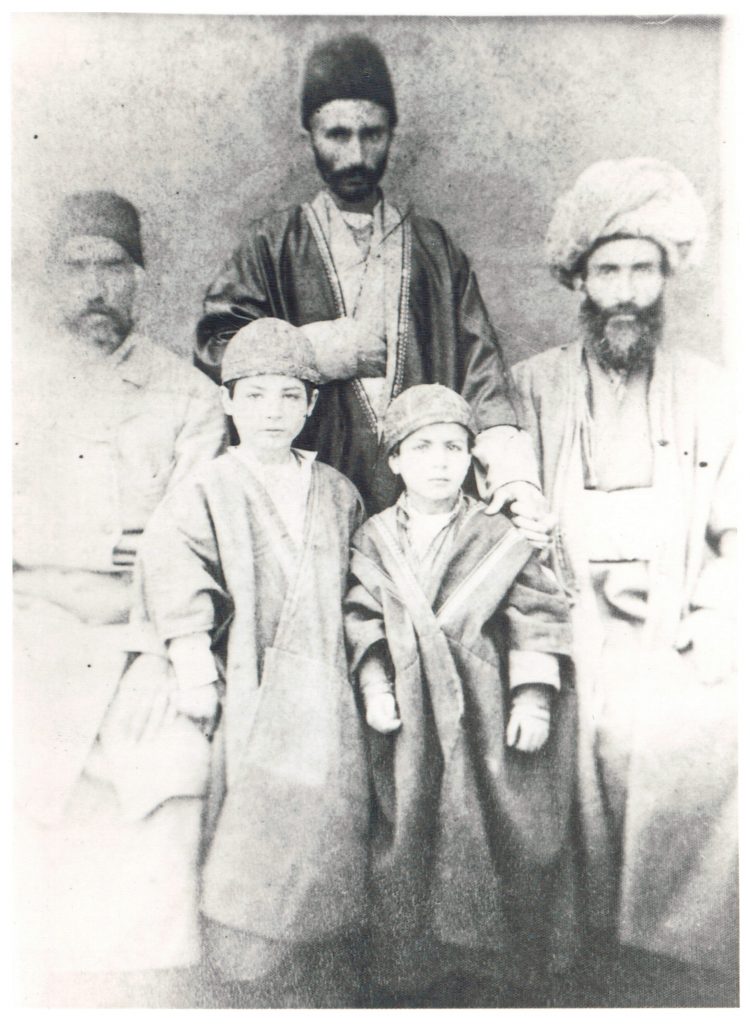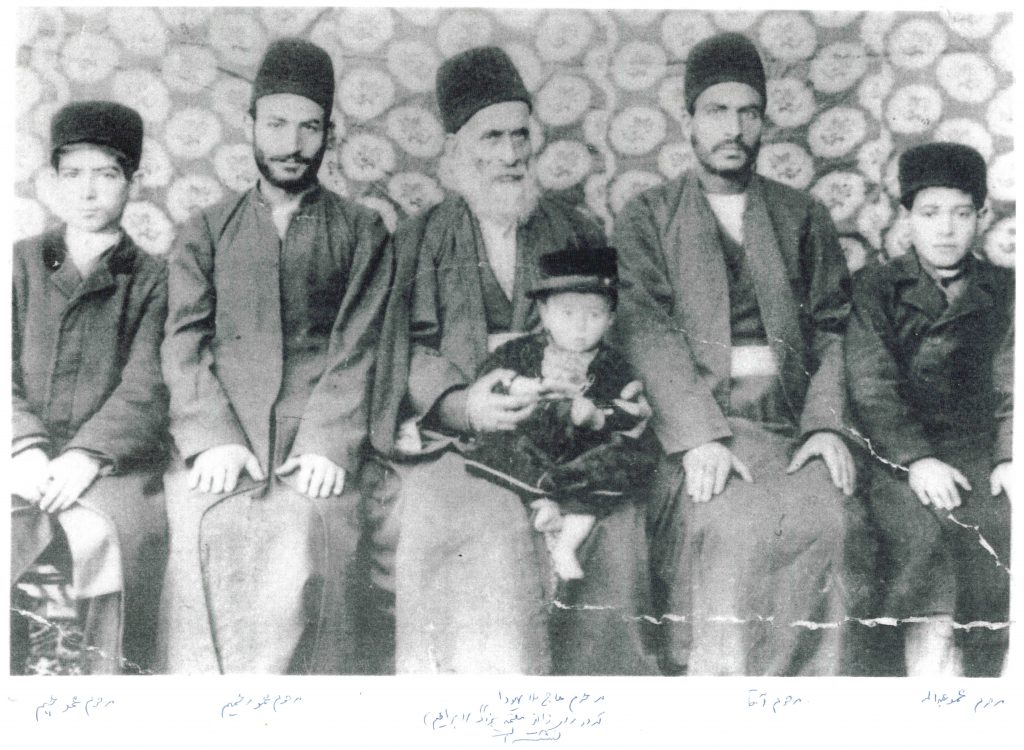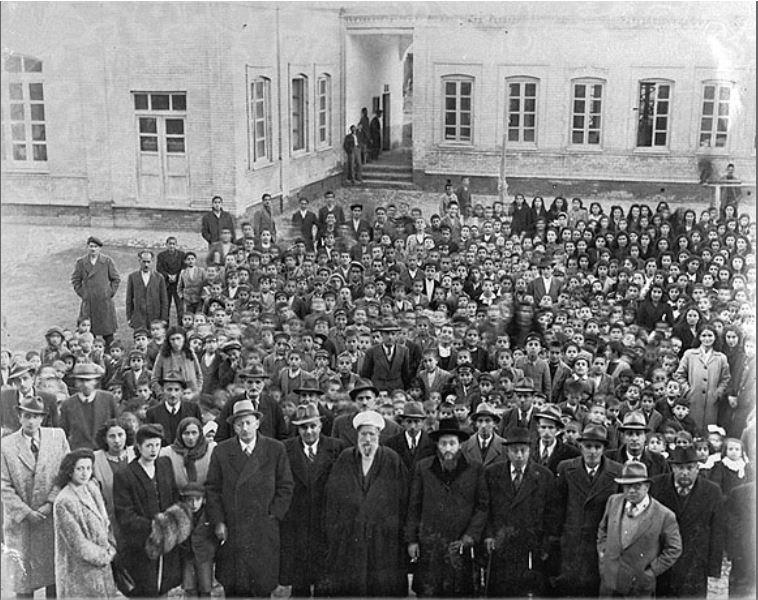The article below is taken mostly from the introduction to a recent book published containing the Teshuvot (halachic responsa) of Mola David Sasson Rabban of Hamedan. The book, which was published in January 2022 by Magen Avot Publishing, contains a much more detailed biography of the Rabbi, as well as a brief overview of the history of Persian Jewry. In addition, the book is accompanied by an appendix in the back containing a list of the customs of the Jews of Iran, and their sources in Halacha. The book can be purchased online via this link.

Brief Biography
Mola David Sasson Rabban was born in 1879 in Hamedan, a city in north-west Iran which is commonly (but wrongly) identified with the city of Shushan from the story of Purim. His father, Mola Yehuda Rabban (born in 1840), descended from a long line of Rabbis who came to Hamedan by way of Yazd, a city which was well known for producing Jewish Sages. Mola Yehuda was the son of Mola Elazar, but beyond that, no other names in the lineage prior to him are known.
To better understand Mola David Sasson’s life, we must first understand what life looked like for Jews in Iran in general, and more specifically, the Jews of Hamedan. Jews have been living in Hamedan as long as they’ve been living in Iran. The experience of Hamedan’s Jewish community (particularly over the last 300 years) was similar to that of other Jewish communities in Iran; most of them oppressed and poor. Pogroms were not rare. Combined with a lower level of Torah education, the Jews were at the mercy of Muslim & Baha’i missionaries who were more than eager to convert them. In fact, due to dire poverty, many Jewish kids were forced to attend Christian or Baha’i schools.
It should be of no surprise that these facts resulted in an exponential population collapse among Hamedan’s Jews. Benjamin of Tudela, a well-known 12th-century Jewish traveler, counted as many as 30,000 Jews in Hamedan. By 1885, there were approximately 5,000 Jews left in Hamedan. By 1948, Hamedan’s Jewish community was a staggering 3,000, as most of them left to Tehran or the newly established Jewish state. Today, there are perhaps only a handful of Jews (at most) left in Hamedan.
Not much is known about Mola David Sasson’s early education. Traditional Talmud Torahs and Yeshivas were scarce in Iran, forcing many young men to receive their education at home. However, Hamedan was an exception to this. We know from the testimonies of his family members that Mola David did in fact travel to Iraq in order to study in Yeshiva there (this was not uncommon among Persian Hachamim). We do not know how old he was when he went there, or how long he was there. It is also unclear as to when he received Semicha, or from whom, but we do know that he received a formal Shetar Shechita in Hamedan in April of 1907 (Iyar 5667), when he was about 28 years old. Mola David Sasson led the Jewish community in Kermanshah (approx. 90km SW from Hamedan) until the passing of his father in 1930. It is at that time the Hamedani community asked Mola David to assume his father’s position as the city’s Chief Rabbi.
Mola David Sasson would lead Hamedan’s Jewish community for nearly the next 40 years. He was largely responsible for handling almost all Jewish communal matters, such as Ketubot (marriage contracts), Shechita (ritual slaughter), Brit Milah (circumcision), and more. He also composed Gitin (divorce contracts) for couples wanting to end their marriage, which was rare until the mid 20th century. He was briefly hired to teach at the Alliance school in Hamedan (which had already been introduced in other Iranian cities by European donors and educators). He later ran the local Otzar Hatorah school in Hamedan (also known in Farsi as ‘Ganj-e-Danesh’) which was founded by Rabbi Yitzchak Meir Levi zt”l.
In addition to his roles of Av Bet Din in Hamedan and teacher at the Otzar Hatorah school, Mola David Sasson also led the synagogue known as Kenisa-ye Mola Rabi (or the synagogue of Mola Rabi). Also known as “Kenisa-ye Yaqub Yari,” this was Hamedan’s second oldest synagogue. Before himself, Mola David’s father, Mola Yehuda, led the synagogue. In addition to these duties, Mola David was also responsible for the maintenance of the tomb of Esther and Mordechai, which was located in Hamedan. His father and grandfather before him also held this sacred responsibility. Towards the end of his life, Mola David Sasson relocated to Tehran in order to be with his children. He passed away on Rosh Chodesh Nissan 1974 (March 24) at the age of 95, survived by 7 children.
About the Book
In January 2022, Magen Avot Publishing printed the teshuvot (halachic responsa) of Mola David Sasson Rabban. While many books containing teshuvot have been printed from other Sephardic countries (such as Iraq, Morocco, Egypt and Syria), this is the first time a work of this kind from a Persian Rabbi has ever been published. The teshuvot were kept in a handwritten manuscript, and it is one of the many literary works that Mola David Sasson left behind. The vast majority of his manuscripts were sent to Eretz Yisrael (together with his large collection of books) through Otzar Hatorah, after his passing. It is unknown where those books and manuscripts are today. This particular manuscript is only one of the few works that survived.
Reading the actual responsa enables readers to have a better understanding and appreciation of Jewish life in 20th century Iran, both for a Mola and the Jewish community at large. Mola David Sasson not only answered questions from other Rabbis throughout Iran, but he also corresponded with Rabbis from Baghdad and Jerusalem as well. The most common topics discussed in his responsa and letters in the book are: (a) Matters of inheritance (yerusha); (b) Matters of marriage and divorce (including Yibum); (c) Letters of recommendation for travelers, particularly those going to Israel; and (d) Matters involving civil disputes and other general questions.
From the sources references in the teshuvot, it’s clear that Mola David Sasson had access to a near
complete library of Rabinnic sources. The sources he relies on include the Shulchan Aruch; Rambam; Rosh; Rif; Mordechi; Rabbenu Yerucham; and Rivash. Later sources include: Rama (both his glosses on the Shulchan Aruch, and his book Darkei Moshe); Perisha Udrisha; Be’er Hetev; Bayit Chadash; Magen Avraham; Eshel Avraham (Butchach); and the Bet Shemuel. Understandably, multiple references are made to Rabbenu Yosef Hayim of Baghdad (Ben Ish Hai), who had a significant impact on Iran’s Jewish community. His works referenced by Mola David Sasson include Ben Ish Hai and Rav Pe’alim.





Recent Comments